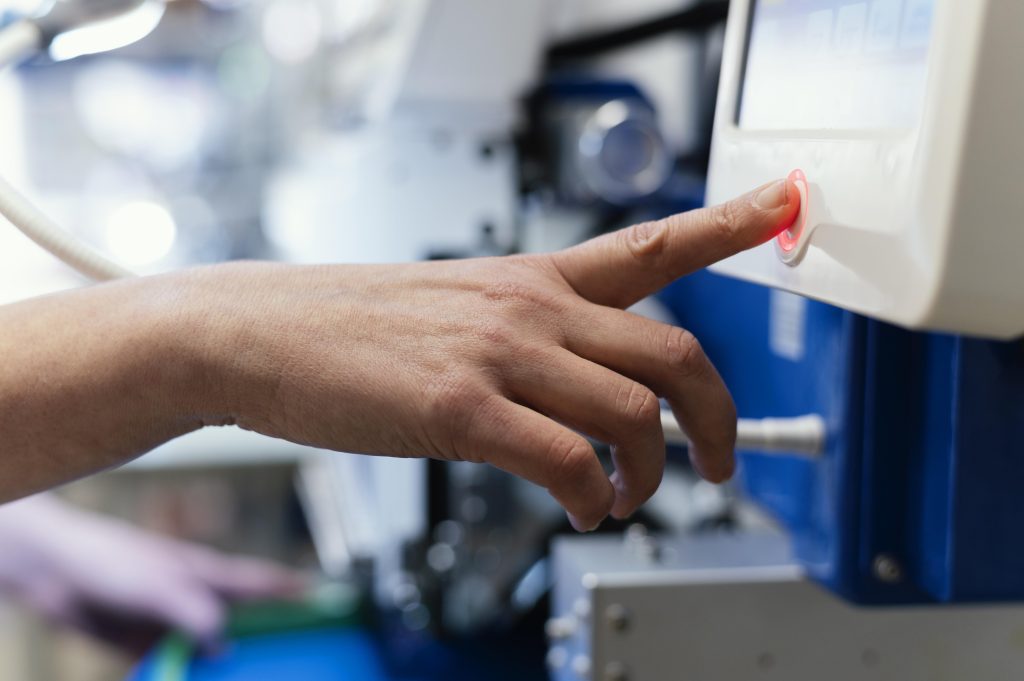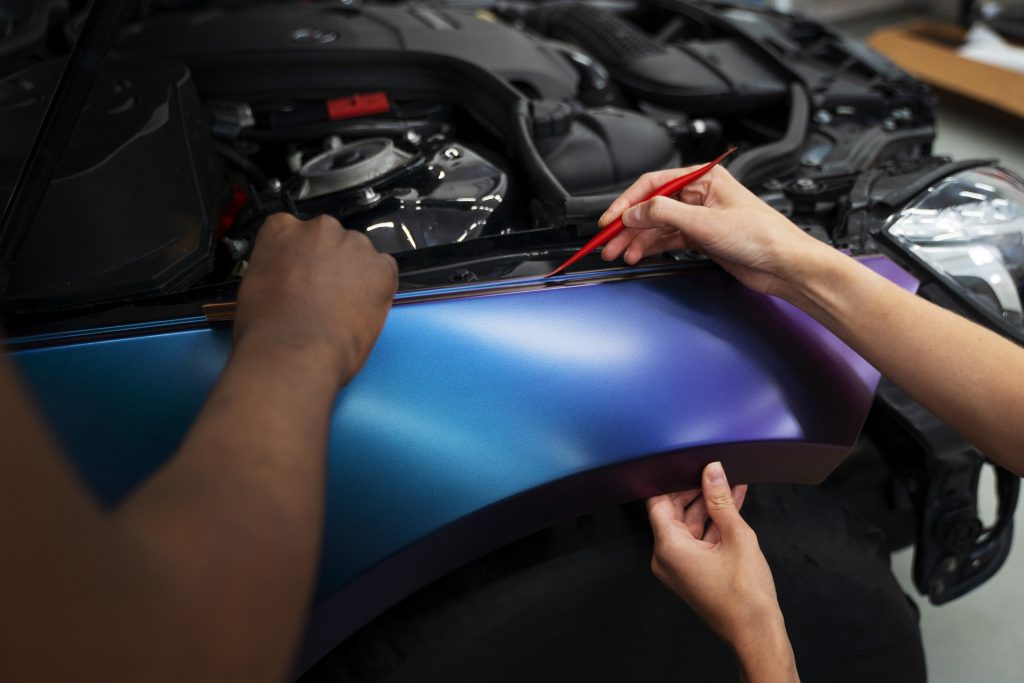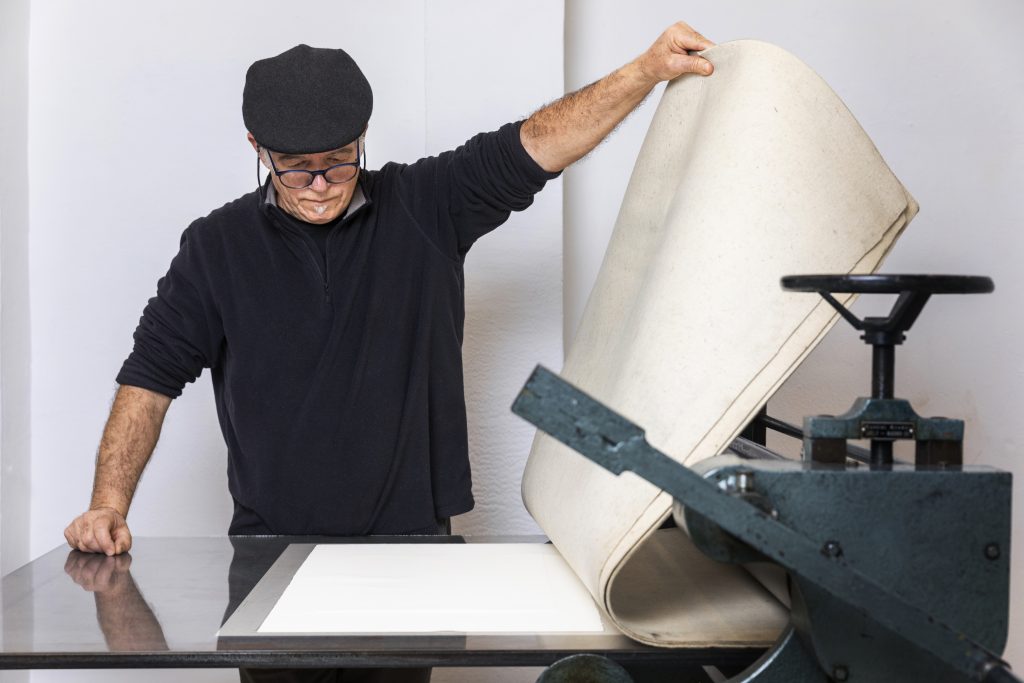Introduction:
Spot Uv- Whether it be business cards, brochures, packaging, or promotional materials, the design and finish play a pivotal role in capturing and holding the viewer’s gaze. Amidst various printing techniques and finishes, two distinct approaches have emerged as game-changers in the industry: Spot UV and glossy finishes. These techniques wield a remarkable power to transform ordinary prints into visually stunning masterpieces, creating an impact that is both tactile and visually captivating.
Spot UV printing is a process that utilizes ultraviolet light to cure a clear varnish in specific areas, creating a striking contrast between the glossy and matte elements of a design. This targeted application of the glossy finish adds depth, dimension, and a tactile appeal to printed materials. By selectively enhancing certain areas, spot UV highlights logos, text, images, or intricate details, creating a visually dynamic experience that draws the viewer’s attention and instills a sense of luxury and quality.
Complementing the allure of spot UV, glossy finishes provide a smooth, reflective coating that enhances the vibrancy and richness of colors. This finish adds a lustrous sheen to the printed surface, creating an eye-catching effect that exudes professionalism and sophistication. Glossy finishes can be applied to the entire surface or specific elements, adding depth and allure to photographs, illustrations, or graphics. The reflective nature of the finish adds a tactile quality, enticing the viewer to engage with the printed piece and explore its intricacies.
What is the spot UV effect in printing?
What is Spot UV? UV coating, in general, is a type of finish or digital embellishment that uses polymer resin and ultraviolet light to add a glossy, protective layer to print materials. The coating hardens and dries when exposed to ultraviolet radiation to create a hard and shiny finish.
The spot UV effect in printing is a technique that involves the application of a clear varnish in specific areas of a printed material, creating a glossy and raised effect on those chosen spots. UV, or ultraviolet, light is used to cure the varnish, resulting in a smooth and shiny finish. This process offers a striking contrast between the glossy and matte elements of a design, adding depth and dimension to the printed piece. By selectively enhancing certain areas, spot UV highlights logos, text, images, or intricate details, creating a visually dynamic experience that draws the viewer’s attention. The raised and reflective nature of spot UV gives a tactile quality to the printed material, enticing the viewer to explore and interact with it.
Spot UV printing can be employed in various ways to achieve different effects. It can be used to create subtle accents or to make specific elements stand out, such as adding a glossy finish to a logo or highlighting important text. The technique can also be utilized to create a contrast between different textures, making certain areas appear smooth and shiny while leaving others with a matte finish. This versatility allows designers to play with visual interest and create a sense of depth within the printed piece.
The spot UV effect is particularly effective in adding a touch of sophistication and luxury to printed materials. Whether it is used on business cards, brochures, packaging, or promotional materials, spot UV enhances the overall perceived value and quality of the product or brand. The glossy and raised areas catch the light and create an eye-catching effect, capturing the viewer’s attention and making a memorable impression.

What is the difference between spot UV and gloss?
Super Gloss and Spot UV are coatings that leave a glossy finish. The main difference is the application – Super Gloss is applied as a flood, which is throughout the entire surface, and Spot UV is applied to specific areas only.
This technique adds depth, dimension, and a tactile appeal to the design, drawing attention to logos, text, images, or intricate details. On the other hand, gloss finishing involves coating the entire surface or specific elements of a printed material with a smooth, reflective finish. It adds a lustrous sheen to the surface, enhancing the richness and vibrancy of colors and creating a visually striking effect.
The key difference between spot UV and gloss lies in their application and coverage. Spot UV is applied selectively to specific areas, creating a contrast between glossy and matte elements, while gloss finish can be applied more broadly, either to the entire surface or targeted sections. Spot UV is ideal for highlighting specific details or creating visual emphasis on key elements, making them pop and stand out. It adds a tactile dimension to the design, inviting viewers to engage with the printed material. On the other hand, gloss finish provides an overall glossy coating that enhances the overall visual impact and professionalism of the printed piece. It creates a sleek and polished appearance, making colors appear more vibrant and giving a luxurious feel to the design.
Both spot UV and gloss finishes have their unique advantages and can be used in combination to achieve even more visually stunning effects. Designers can leverage these techniques to create captivating printed materials that leave a lasting impression on viewers. Whether it’s a business card, brochure, packaging, or promotional material, the choice between spot UV and gloss will depend on the desired visual impact, the specific elements to be emphasized, and the overall aesthetic goals of the design.
What is the difference between spot gloss and raised spot gloss?
Our regular Spot UV is a flat finish, a shiny gloss layer that is applied where you’re seeking an area of high gloss coating. Raised Spot UV coating uses a similar process, except the applied UV is high off the card. You can feel it when you run your fingers over it.
It creates a contrast between the glossy and matte surfaces, making the treated areas stand out. Spot gloss adds a sleek and sophisticated look to the design, highlighting certain elements such as logos, text, or images. This technique is achieved by applying the gloss coating in a flat layer, resulting in a smooth and seamless finish.
On the other hand, raised spot gloss, also known as raised UV or embossed spot gloss, offers an additional tactile dimension to the printed material. It involves applying a glossy varnish or coating to specific areas and then raising those areas to create a textured or raised effect. This technique provides a three-dimensional appearance, with the treated areas having a slightly elevated surface compared to the rest of the design.
The key difference between spot gloss and raised spot gloss lies in the level of texture and dimensionality. Spot gloss creates a visual contrast between glossy and matte surfaces without any physical elevation, while raised spot gloss adds a tactile element by raising the treated areas. Both techniques have their unique applications and can be used independently or in combination to achieve different design effects. The choice between spot gloss and raised spot gloss depends on the desired aesthetic and the level of visual and tactile impact the designer wishes to create.

What is UV gloss printing?
UV coating, or ultraviolet coating, is a very glossy, shiny liquid coating applied to a printed paper surface and cured on a printing press or special machine using ultraviolet light. The coating hardens, or cures when it is exposed to the ultra violet radiation.
UV gloss printing refers to a specialized printing technique that involves the application of a glossy and protective coating to a printed surface using ultraviolet (UV) light. This process creates a smooth and shiny finish that enhances the visual appeal of printed materials. UV gloss printing offers several advantages that make it a popular choice in the printing industry.
One of the primary benefits of UV gloss printing is its ability to enhance the richness and vibrancy of colors. The glossy coating reflects light, giving the printed piece a lustrous sheen and intensifying the colors, making them appear more vibrant and eye-catching. This effect adds a sense of professionalism and sophistication to the design, elevating its overall visual impact.
Another advantage of UV gloss printing is its durability and resistance. The UV curing process creates a hard and protective layer on the printed surface, making it more resistant to scratches, abrasion, and fading caused by exposure to sunlight or moisture. This durability ensures that the printed materials maintain their quality and longevity, making them suitable for applications that require long-term use, such as business cards, brochures, or product packaging.
UV gloss printing is also known for its quick drying time. As the UV inks are instantly cured using UV light, there is no need for additional drying time or waiting for the ink to set. This allows for faster production and turnaround times, making it an ideal choice for projects with tight deadlines.
What is the purpose of UV printing?
UV digital printing speeds up the print production process by instantly curing specially formulated UV inks on a vast range of materials using UV lamps. Piezo print heads eject ink with precision onto the print media. This technology gives you control over the print quality, colour density and finish.
The purpose of UV printing is to achieve high-quality, vibrant, and durable prints with exceptional detail and visual impact. UV printing utilizes ultraviolet (UV) light to instantly cure UV inks, resulting in sharp, vibrant colors and precise image reproduction. The primary purpose of UV printing is to enhance the overall quality and appearance of printed materials, making them stand out and leave a lasting impression on viewers.
The UV curing process prevents ink absorption into the printing substrate, resulting in higher color saturation and sharper image reproduction. This allows for the creation of visually stunning prints that accurately represent the intended colors and details of the design.
Another important purpose of UV printing is to ensure durability and resistance. The UV curing process creates a protective layer on the printed surface, making it more resistant to scratches, abrasion, and fading caused by exposure to sunlight or moisture. This enhances the longevity and durability of the printed materials, making them suitable for various applications that require long-term use, such as signage, outdoor displays, and product labels.

Can spot UV and glossy finishes be applied to any type of printed material?
Spot UV and glossy finishes can be applied to a wide range of printed materials, but the suitability may vary depending on the specific characteristics and requirements of each material. In general, spot UV can be applied to most paper-based materials, including business cards, brochures, book covers, postcards, and packaging. The key consideration is the porosity of the material. Spot UV works best on smooth, non-absorbent surfaces, as it requires a clear varnish to sit on top of the material rather than being absorbed into it. Therefore, materials with a coated or laminated surface tend to yield the best results for spot UV applications.
Similarly, glossy finishes can also be applied to various printed materials. The glossy coating adds a smooth, reflective layer that enhances colors and provides a lustrous sheen to the surface. This finish is compatible with paper, cardboard, and some plastics. However, it is important to note that the material should have a suitable texture and surface quality to ensure proper adhesion and achieve the desired glossy effect. Coated papers or materials with a smooth surface are typically more compatible with glossy finishes, allowing for a uniform and visually appealing result.
While spot UV and glossy finishes can be applied to a wide range of printed materials, it is recommended to consult with printing professionals to determine the best approach for each specific material and design. They can provide guidance on the compatibility of the finishes with the chosen material, suggest any necessary adjustments or preparations, and ensure that the desired visual effects are achieved successfully.
How do spot UV and glossy finishes enhance the overall aesthetic of a design?
Spot UV and glossy finishes play a significant role in enhancing the overall aesthetic of a design by adding visual interest, depth, and a sense of sophistication. Spot UV is particularly effective in drawing attention to specific elements of a design. By selectively applying a glossy varnish to chosen areas, such as logos, text, or images, spot UV creates a striking contrast between glossy and matte surfaces. This contrast adds depth and dimension to the design, making those elements stand out and capturing the viewer’s attention. The tactile quality of spot UV further engages the viewer, as they are enticed to explore and interact with the printed piece.
The smooth and reflective coating enhances the richness and vibrancy of colors, making them appear more vibrant and captivating. Gloss finishes add a lustrous sheen to the surface, providing a high-quality and professional look. This can elevate the perceived value of the design and enhance the overall impression of the printed material. Glossy finishes are particularly effective in product packaging, as they can create an alluring and eye-catching appearance that entices consumers.
They add a touch of sophistication and enhance the perceived quality of the printed materials, making them stand out in a crowded market. These finishing techniques allow designers to play with textures, create focal points, and add depth to their designs, ultimately elevating the overall aesthetic and making a memorable impression on viewers.

Are there any considerations or guidelines for incorporating spot UV and glossy finishes in artwork?
When incorporating spot UV and glossy finishes in artwork, there are several important considerations and guidelines to ensure optimal results. First and foremost, it is crucial to work closely with printing professionals who have experience with these techniques. They can provide valuable insights and guidance throughout the design process, ensuring compatibility between the artwork and the desired finishes.
One consideration is the design itself. Not all designs are suitable for spot UV and glossy finishes. Intricate or small details may not work well with spot UV, as it requires a certain level of thickness to achieve the desired effect. Similarly, glossy finishes may not work as effectively on textured or highly porous materials, as the smoothness of the surface is essential for a uniform glossy appearance. Simplifying and optimizing the design for these finishes can help ensure better outcomes.
Another consideration is the choice of materials. Spot UV works best on smooth and non-absorbent surfaces, such as coated papers or laminated materials. Testing the compatibility of the finishes with the chosen materials is recommended to avoid potential issues and ensure proper adhesion and visual impact.
Conclusion:
The power of spot UV and glossy finishes in printing cannot be understated. These techniques have the ability to transform ordinary printed materials into captivating visual experiences that leave a lasting impact on viewers. Spot UV printing, with its targeted application of glossy varnish, adds depth and dimension to designs, creating a tactile appeal that draws attention and conveys a sense of luxury. On the other hand, glossy finishes contribute a smooth, reflective coating that enhances colors, adding a lustrous sheen that exudes professionalism and sophistication.
The combination of spot UV and glossy finishes opens up endless creative possibilities for designers and marketers. By selectively enhancing specific elements or employing them throughout the entire surface, brands can elevate their visual identity and create a memorable impression on their target audience. These techniques are particularly effective in packaging design, where they can instantly captivate consumers and communicate the quality and value of the product inside.



